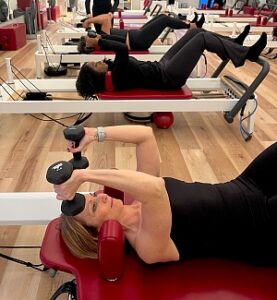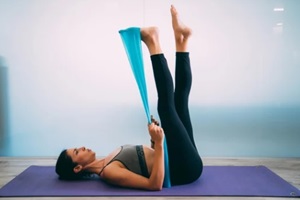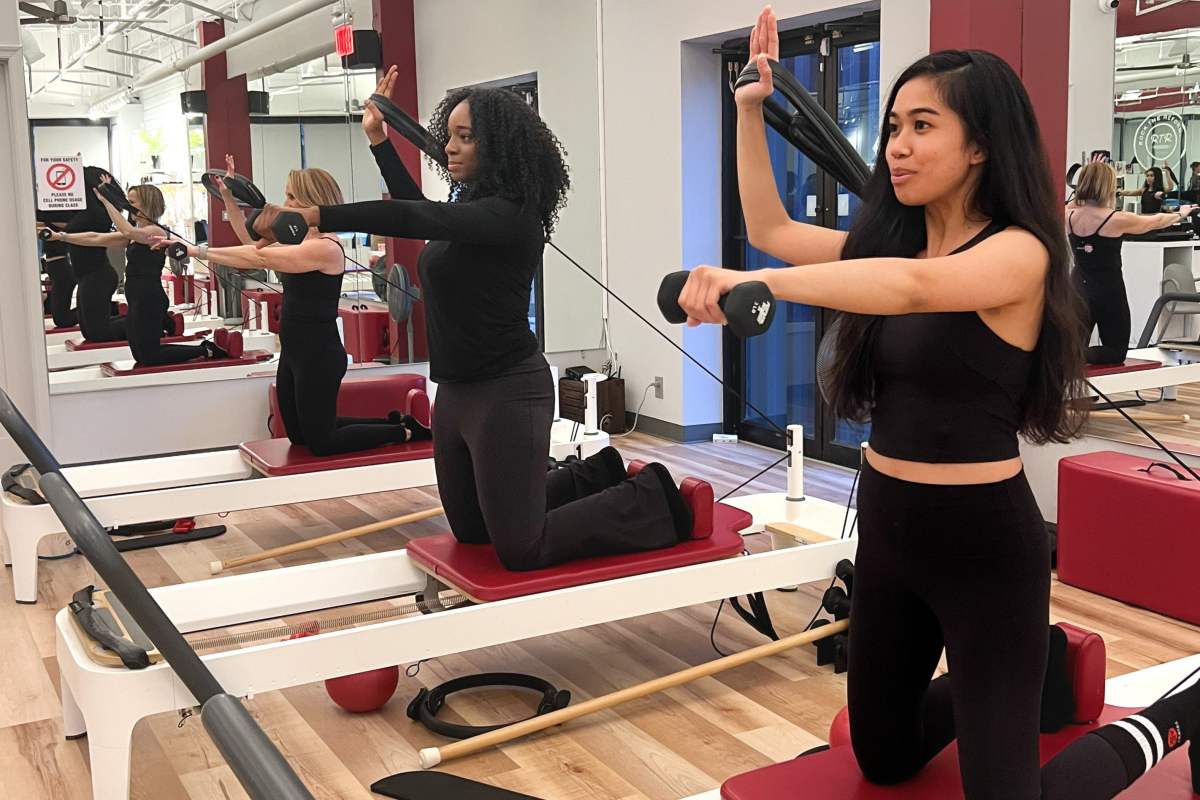 Pilates can be an accessible form of strength training and wellness for anyone. It also offers increased degrees of challenges by simply adjusting the reformer and types of exercises.
Pilates can be an accessible form of strength training and wellness for anyone. It also offers increased degrees of challenges by simply adjusting the reformer and types of exercises.
That’s why studios organize their Pilates classes into levels, providing participants an opportunity to choose what difficulty and complexity feels right for them.
Beginners start with Level 1 work, and those with experience in Pilates who are ready to move on to more advanced forms can join higher level classes.
The benefits of Pilates classes include strengthening the body—but is Pilates alone enough to count as strength training?
Here’s what you should know about strength training and Pilates, what it does to both the body and the brain, and how our new Level 3 classes can help you achieve your goals.
Does Pilates Count as Strength Training?
Yes, Pilates achieves many goals: self-reflection, flexibility, breath control, and more.Typically, most people enjoy Pilates for the way that it strengthens their bodies. At its core, this is the definition of strength training—that which makes your body stronger.
For instance, Pilates exercises target muscles in three ways:
- Eccentric – muscles are lengthened
- Concentric – muscles are contracted
- Isometric – muscles are held stable under a load
In standard strength training, some common eccentric muscle exercises include heel drops, overhead presses, and reverse push-ups. In each of these scenarios, a person is extending their muscle in order to achieve stability and strength.
Conversely, concentric exercises contract the muscles; these make up a large portion of the exercises that most people associate with “working out.” Bicep curls, lunges, and push-ups are all examples of concentric exercise.
Isometric exercises hold the body steady in order to feel the muscular burn. Wall sits, planks, and static lunges all require a person to hold their position in order to see and feel the benefits.
Performing these types of muscle exercises in Pilates can be accomplished using the Reformer. During Pilates exercises, these three behaviors combined are what make muscles stronger, and they are also what build stability and flexibility.
Pilates is especially beneficial because in many exercises, you could be doing all three types of muscle exercises with different body parts as a result of the adaptability offered by the Reformer.
The Body/Brain Connection
 Pilates is a great way to build strength, offering many of the same benefits that other types of strength training do. Strengthening the body has been shown to boost a person’s health in more ways than one as a result of the connection between the body and the brain.
Pilates is a great way to build strength, offering many of the same benefits that other types of strength training do. Strengthening the body has been shown to boost a person’s health in more ways than one as a result of the connection between the body and the brain.
For example, reputable sources such as Harvard Health have found that strength training increases bone and muscle mass and lowers the risk of death from any cause by between 10% and 17%. However, these physical effects are not the only advantage.
The University of Sydney discovered that strength training also slowed (and in some cases entirely halted) cognitive degeneration in areas of the brain that are normally prone to the development of conditions such as Alzheimer’s.
The challenging, controlled movements of strength training cause a release of hormones and chemicals that work to reduce stress and anxiety.
Understanding Level 3 Classes
By using the resistance of the Reformer’s springs and your own body weight, you can achieve increased strength through Pilates. If Pilates provides strength training already, how can you reap even more benefits from it?
For people who are able to lift more than their body weight, adding weights goes above and beyond that challenge. Higher-level classes use springs and carriage movement alongside weights in more unique ways to challenge participants more than they can challenge themselves in a gym.
That’s why we are passionate about sharing Pilates with as many people as possible during our classes. In fact, we are improving our higher-level Pilates classes.
Starting May 20, 2024, our targeted Level 3 class will be available, offering a Pilates difficulty of a Level 2+ but also incorporating heavier weights to enhance the strength training aspect.
Participating in a Pilates class with a strength training regimen brings out the best of both worlds: greater flexibility, core strength, and stability from Pilates coupled with a gradual increase in a person’s overall strength and maximal capacity.
When these two activities are paired together, participants reap greater benefits than they do when performing just one.
Try RTR Pilates’ New Strength Training Level 3 Pilates Class
 Pilates with strength training brings the best of each modality to create a comprehensive experience. Incorporating more strength training into our Level 3 classes allows those with Pilates experience to reap increased benefits, while under the guidance of a professional instructor.
Pilates with strength training brings the best of each modality to create a comprehensive experience. Incorporating more strength training into our Level 3 classes allows those with Pilates experience to reap increased benefits, while under the guidance of a professional instructor.
At this level, it remains important to practice good form to avoid injury and get the most out of the activities. RTR Pilates is proud to guide our classes with experienced instructors who are knowledgeable and excited to see you succeed.
Contact RTR Pilates to sign up for our new Level 3 class—or, if you’re not ready for that just yet, try out one of our other class levels to see how Pilates can work for you.

